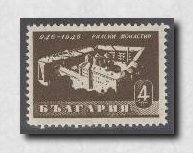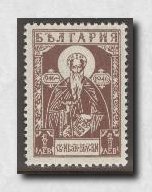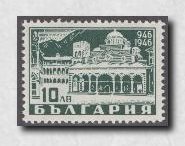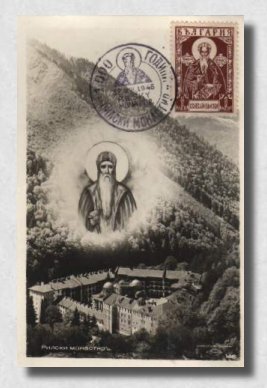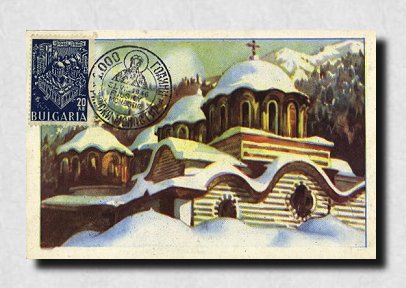The expansion of the new Bulgarian state was limited by the warrior tribes on
the plains to the north and by the Black Sea to the east, and thus had to turn
towards the north-west and south-west. Khan Krum (†814) dedicated this whole
life to this task. First, he invaded the Avar kingdom to the north-west and
incorporated Transylvania in Bulgaria. Then he moved his attention to the south,
and in 811 he took Sredets (Sofia) from the Byzantine empire, quickly followed by
Nessebur on the Black Sea coast and Adrianople (Edirne) in Thrace.
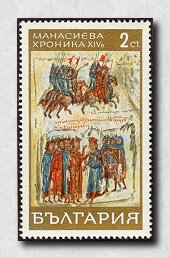 Nicephorus is taken captive
Nicephorus is taken captive
Mi 1872
|
The Byzantine emperor Nicephorus attacked Bulgaria in 811 in an attept to regain
the lost lands. Krum defeated the Byzantine army and captured Nicephorus. The emperor
was later executed as the first of his standing in 500 years. Krum made himself a
drinking bowl of the emperors skull.
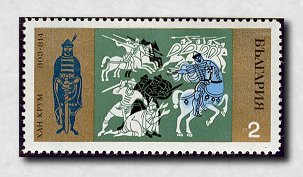
Mi 1974
|
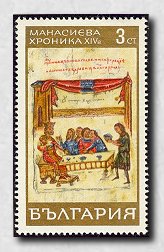
Celebrating the victory over Nicephorus
Mi 1873
|
In 813 Krum's army stood outside the walls of Constantinople. The Bulgarians
prepared the attack on the city for nearly one year, but due to Krum's
sudden death in April 814 the attack was never initiated.
In addition to his conquests, Khan Krum is also credited the making of the
first written laws of Bulgaria.
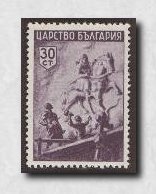 The Rider of Madara
The Rider of Madara
Mi 444
|
”The Rider of Madara” is a famous relief in a 100 m high cliff near the village
Madara east of Shumen. The relief is included in the list of UNESCO World Heritage
Sites and has been assumed to picture Khan Krum. However, recent research dates
the relief to around 710 A.D, during the reign of Khan Tervel, the son of
Khan Asparukh.
|
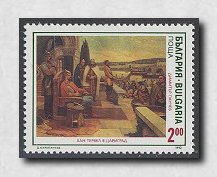 Khan Tervel
Khan Tervel
Mi 4040
|
|
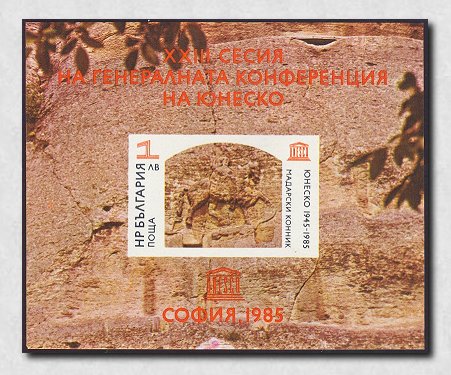 |
|
In 852, Khan Boris I inherited the throne of one of the mightiest states
in Europe at the time. He is best known for introducing Christianity in Bulgaria
in 864. This enabled a peace treaty with the Christian empire of Byzantium and
easier acceptance from the other Christian powers in Europe. More important, however,
was Boris' achievement of merging the two dominating ethnic groups in Bulgaria,
the Christian slavs and the pagan Bulgarians, thus increasing the nation's
unity against the abundant foreign enemies.
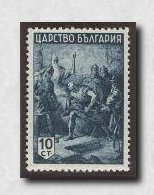 Mi 442
Mi 442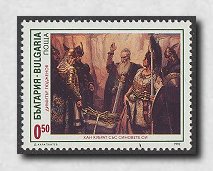 Mi 4038
Mi 4038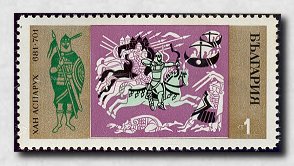
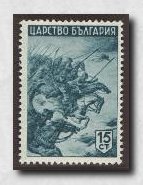
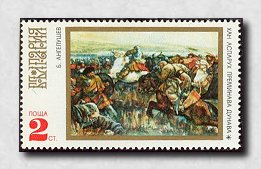
 Nicephorus is taken captive
Nicephorus is taken captive


 The Rider of Madara
The Rider of Madara
 Khan Tervel
Khan Tervel

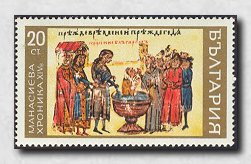
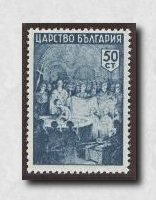
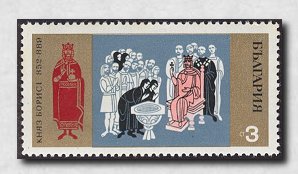
 The coronation of
The coronation of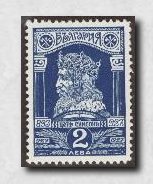 Tsar Simeon
Tsar Simeon 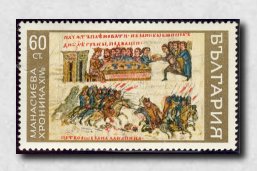
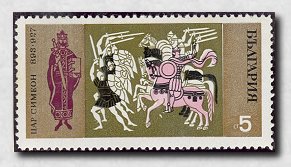
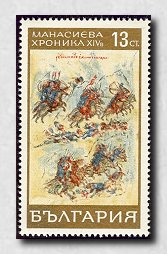 Prince Sviatoslav of Kiev
Prince Sviatoslav of Kiev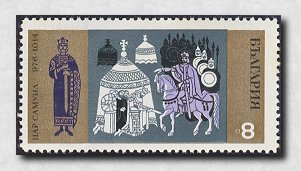
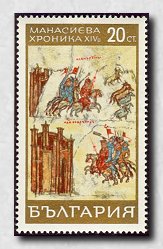 Emperor John Tzimiskes
Emperor John Tzimiskes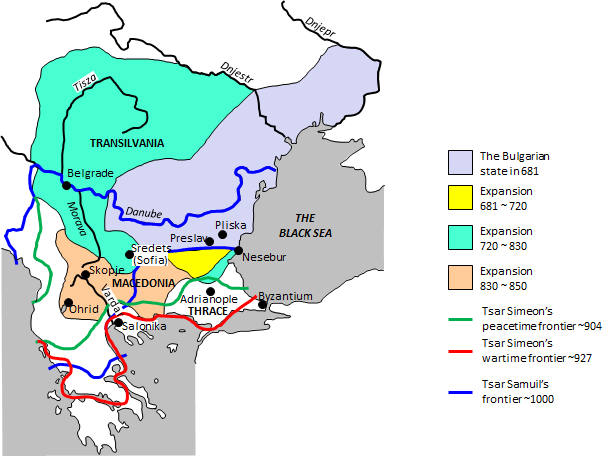
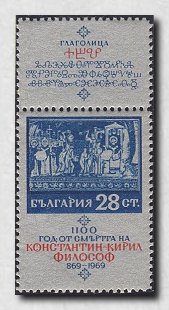
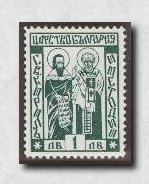
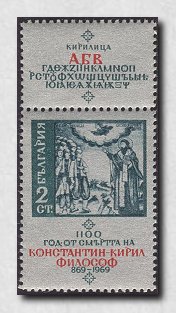
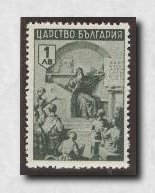 St. Naoum teaching
St. Naoum teaching
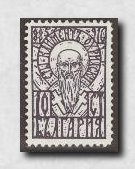 St. Kliment of Ohrid
St. Kliment of Ohrid
